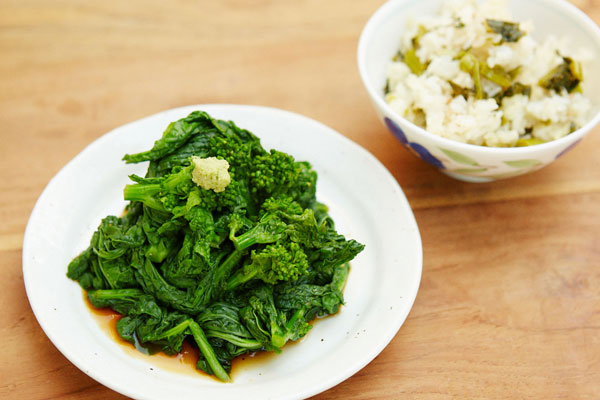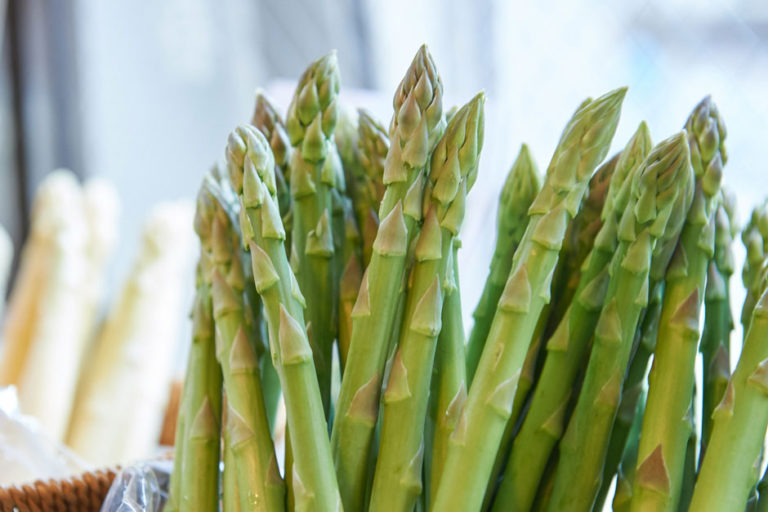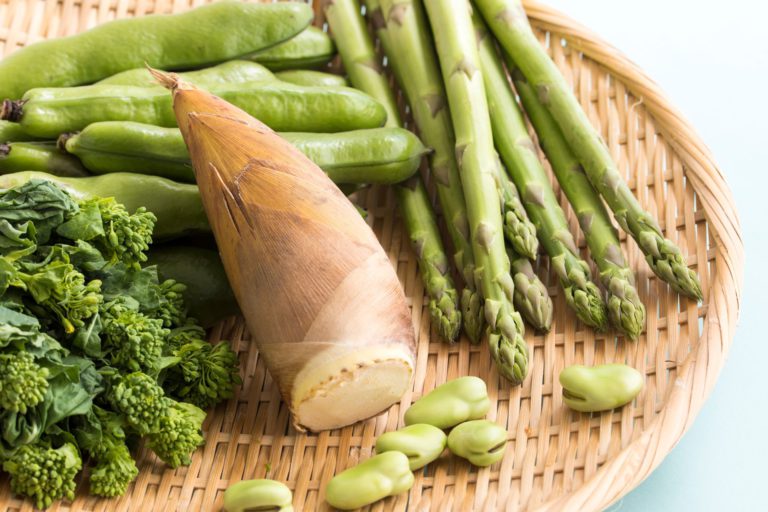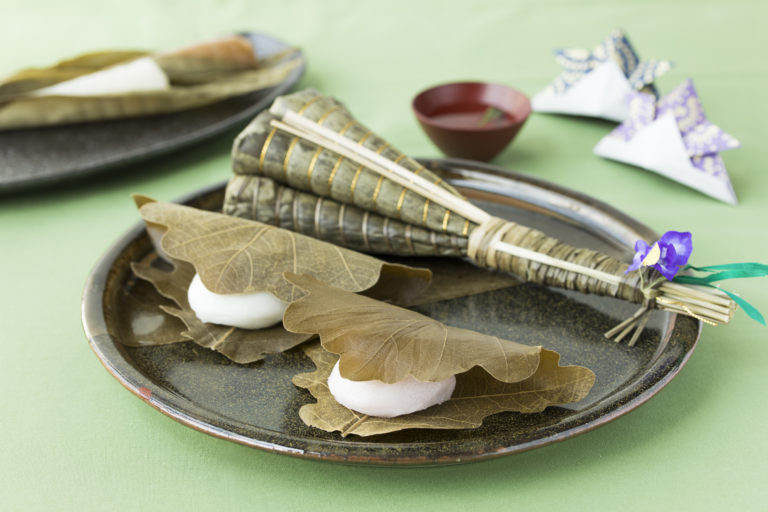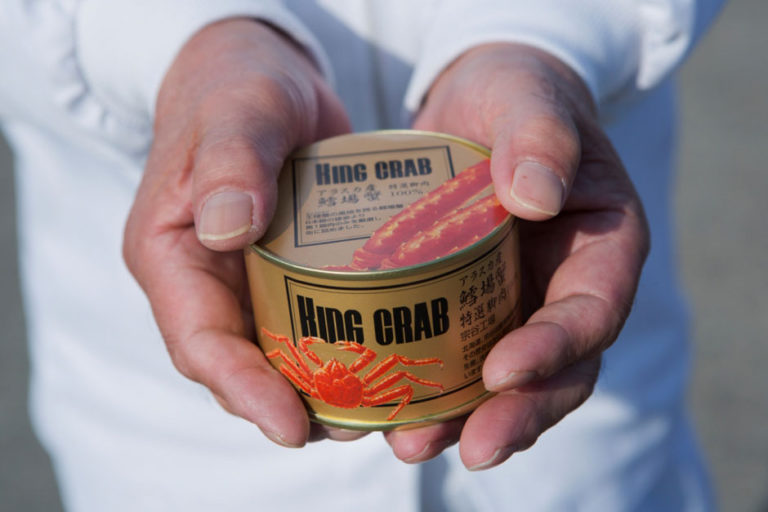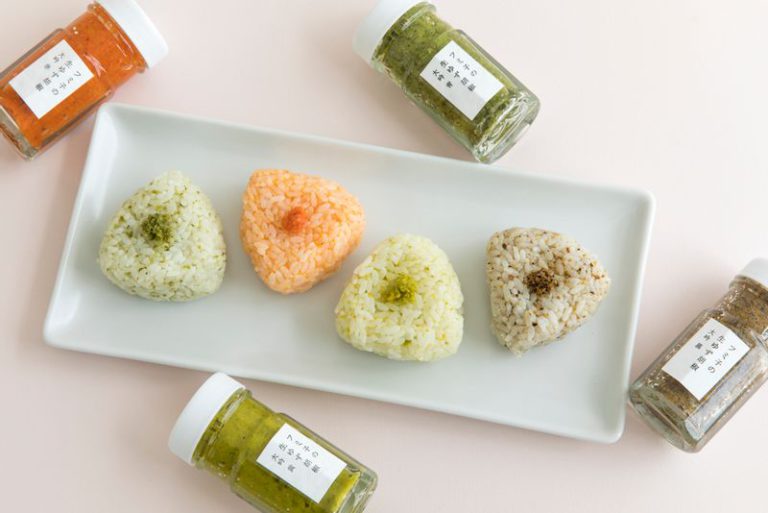Nanohana
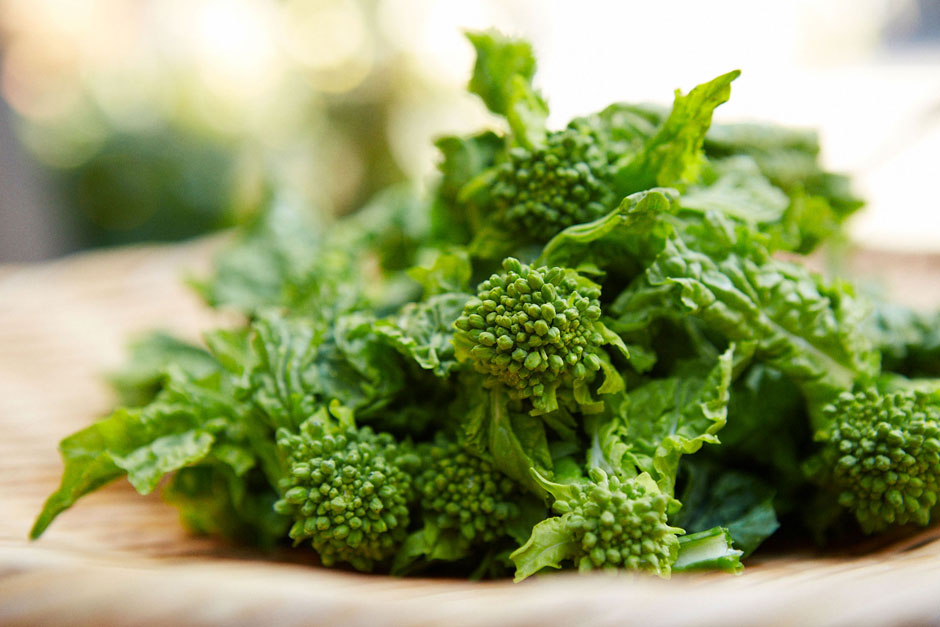
In this installment, we take a look at nanohana, a type of rapeseed plant. We will learn all about this vegetable, including how to find the best nanohana in stores. We’ll also give you some great recipes to try.
Spring Vegetables that Make the Heart Dance with Joy
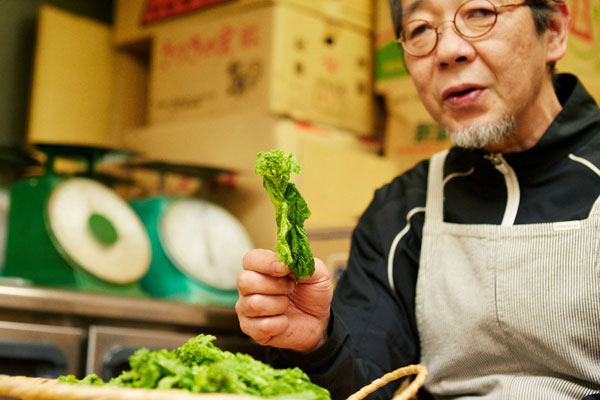
“I believe there’s a sense of happy anticipation that nature brings in the spring. And the anticipation builds even more when I think that a new set of four seasons is about to begin,” says Uchida with a cheerful smile.
Even after a very cold winter, eventually the days start to grow longer and the sun’s rays begin to change. As if to respond to such changes, the vegetables that have survived through the winter begin to show their buds. Many of the spring vegetables that get harvested around this time are unique, often having a bitter flavor. According to Uchida, this bitterness improves one’s metabolism by helping the body’s excretory functions.
“One of the most popular spring vegetables is the nanohana. We eat the young sprouts before their flowers start to bloom. If I were to personify this plant, it is like a girl going through adolescence. While she can be a bit bitter, if you treat her gently, she becomes more kind, pleasant, and sweet. Nanohana is just like that. It is definitely not a masculine plant (laughter).”
Choosing the Best Nanohana
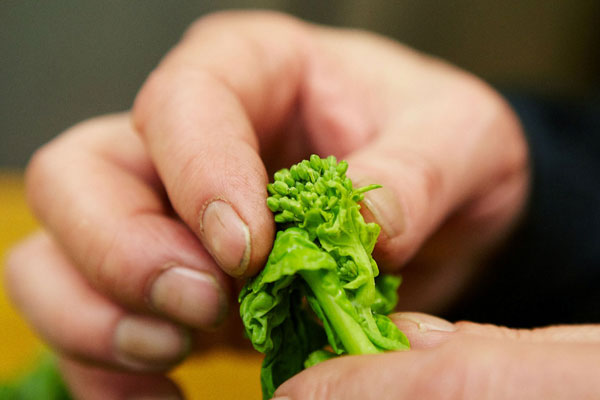
Nanohana is a plant native to Central Asia. In Japan, much of it is harvested in Chiba Prefecture.
It is only in season for a short period of time, from February through April. If you aren’t careful, the plant will quickly sprout flowers and get ready to drop their seeds, so we have to make sure we catch them during those three months.
Early in the season, nanohana is juicy and soft.
As the plant approaches maturity and heads toward the end of the season, it gradually becomes more and more bitter and acrid. Cooking the vegetable in line with these characteristics allows us to enjoy its short in-season time to the fullest.
When selecting the vegetable, Uchida says that in general, it is best to choose ones whose color is lighter green.
Looking at the “bud, leaf, and stem” separately makes it easier to select.
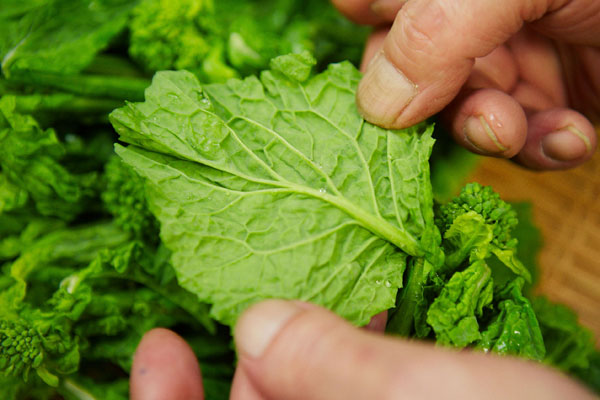
・Buds: They are tight and firmly closed.
・Leaves: Their veins look beautiful and there is an even amount on left and right sides.
・Stems: They are fat and the axes are well centered.
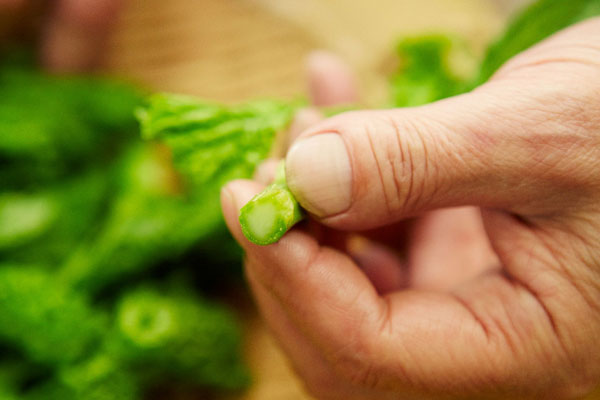
Let us consider here the eight key criteria for judging vegetables.
Uchida's 8 Points For Vegetables
![]() Shape: Choose rounder vegetables.
Shape: Choose rounder vegetables.
![]() Size:It does not have to be large, but it should have weight.
Size:It does not have to be large, but it should have weight.
![]() Color:Light green is key.
Color:Light green is key.
![]() Balance:The shape and veins of the leaves should be even on the left and right sides.
Balance:The shape and veins of the leaves should be even on the left and right sides.
![]() Axis:Look for a smaller axis that is well centered on the vegetable.
Axis:Look for a smaller axis that is well centered on the vegetable.
![]() Fibers:The fibers should run straight up and down.
Fibers:The fibers should run straight up and down.
![]() Bud/Seed Bed:This is the sign of good vitality. Check seeds, buds, and seed bed numbers.
Bud/Seed Bed:This is the sign of good vitality. Check seeds, buds, and seed bed numbers.
![]() Choose vegetables that wither, not rot.
Choose vegetables that wither, not rot.
Enjoying Nanohana in a “Same-Season Combination” Nanohana Tossed in Wasabi
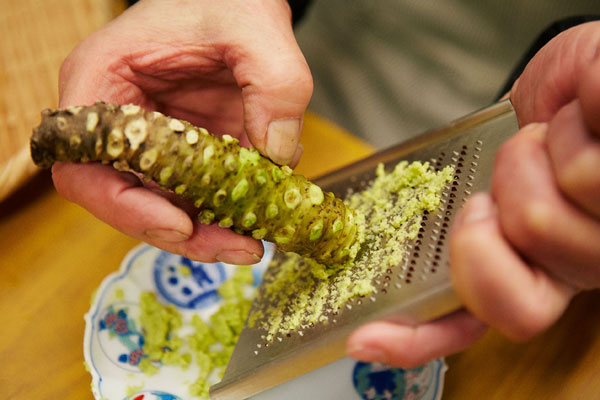
We asked Uchida the best way to prepare nanohana plants that are in-season.
“We commonly see nanohana seasoned with mustard, right? Well, I prefer to mix it with wasabi. Mustard is great, but wasabi is a compliments nanohana well,” says Uchida. Doushun ae (“same-season mixture”) is a dish made by combining ingredients that are in season at the same time of the year?the best possible match of two in-season items that can only be brought together at a certain time of the year.
Uchida made us Nanohana Tossed in Wasabi using raw wasabi, which is in season in the spring.
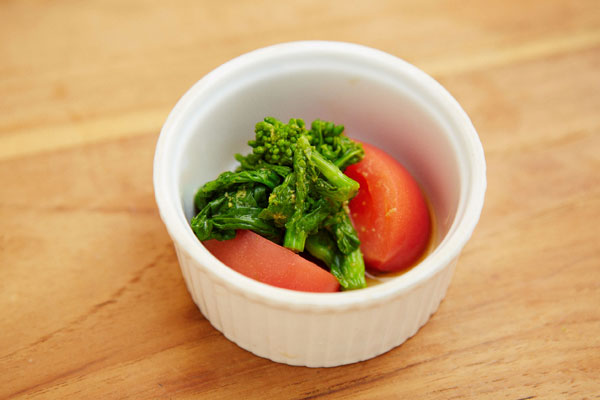
“The synergetic combination of the gentle bitterness of nanohana and the hot taste of wasabi causes these flavors to balance out and draws out the deliciousness of each ingredient.” In keeping with the “same-season combination” concept, he also recommends combining nanohana with tomatoes that are also in season in the spring.
Uchida also showed us how to make a nanohana rice dish. Try it with Nanohana Tossed in Wasabi.
The Repeating Four-Season Relay
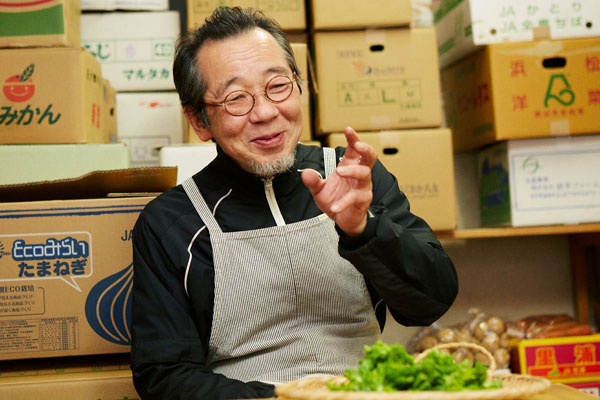
“Once summer arrives, we will not be able to eat nanohana even if we want to. Now is the only time. By always being mindful of the unwavering in-season foods, we learn to experience the joy of eating, which is a fundamental part of life.”
Like nanohana, whose flowers bloom and seeds drop once its season has passed, every vegetable grows in its own perfect environment.
Then vegetables for the next season come along. By repeating this seasonal relay through spring, summer, fall, and winter, we can continuously find joy in the respective special foods that are in-season.

